Sogabe Tomofumi and Ladakh’s Fermentation Culture
Jun 17,2021
Sogabe Tomofumi and Ladakh’s Fermentation Culture
Jun 17,2021
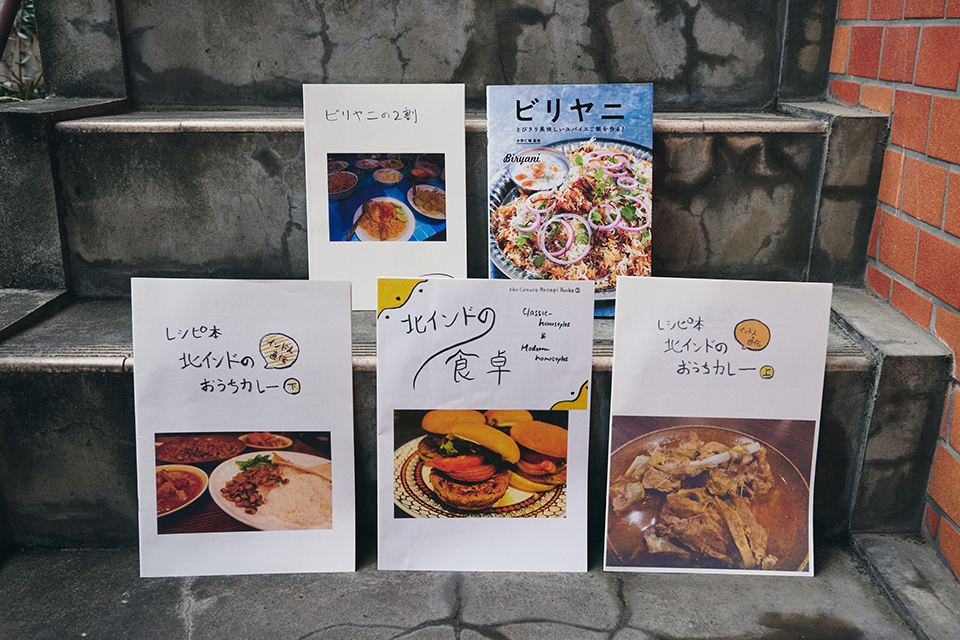

Traveling chef Sogabe Tomofumi backpacks around the world while delving deep into the cuisines he encounters along the way. He then shares what he’s learned with a wider audience by holding events, creating recipes, and self-publishing books. His current focus is the food of Ladakh, the remote, mountainous northernmost region of India.
We asked this intrepid explorer of the world’s food cultures about his adventures on the road and Ladakh’s traditional fermented foods.
Tomofumi is often pigeonholed as a curry specialist, but he doesn’t restrict his culinary interests to the Indian subcontinent.
“The deeper I delve into different food cultures, the more intrigued I become by the connections among them. For example, in Thailand there’s khao mok. In Saudi Arabia there’s kabsa. In Myanmar there’s danpauk. All are like biryani, the spicy rice dish beloved in India, Pakistan, and Bangladesh. I’d like to know the origins of these dishes and how they’re linked with the biryani of the Indian subcontinent.”
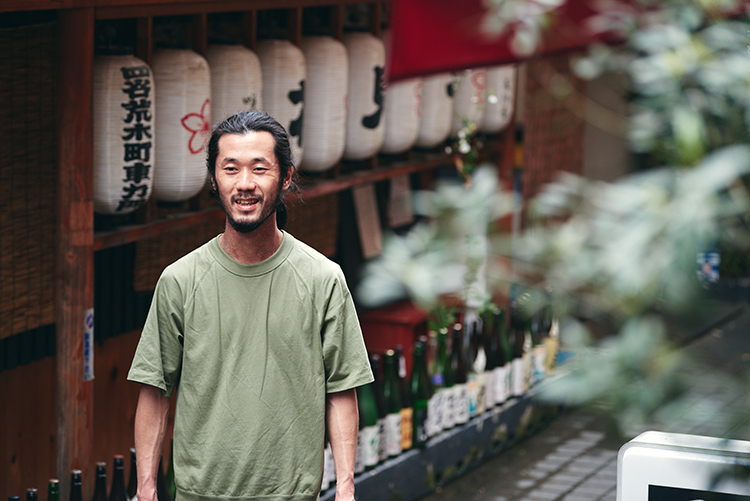
Chef Sogabe Tomofumi, who roams freely from country to country
Tomofumi’s synoptic approach to food culture is evident from the story of his first backpacking trip in his university days.
The first place he visited was Kuala Lumpur, Malaysia, where he got to know a friendly young Malaysian of Chinese extraction. He asked the fellow to take him to a restaurant that served Malay home cooking. Then things took an unexpected turn.
“He proudly took me to an Indian restaurant, for some reason. I wasn’t sure what to make of that at the time. Maybe he figured that for a Japanese like me, Malay food and Indian food were much the same. Or maybe, being ethnic Chinese, he couldn’t tell the difference himself. That came as a real culture shock — and my trip had only just begun. It was kind of an interesting experience.”
Having worked part-time at an Indian restaurant in his native Hiroshima Prefecture while in high school, Tomofumi already had a fair idea of what Indian food was about. On this occasion, though, he got to experience firsthand how in Malaysia, three different ethnic groups exist side by side: Malays, Chinese, and Indians. They more or less keep their distance from one another while maintaining their own cultures.
Afterwards, he took the land route north from Kuala Lumpur along the Malay Peninsula and crossed the border, arriving in Hat Yai in southern Thailand. There, at a food stall in the marketplace, he had his first encounter with khao mok. He was intrigued by its resemblance to biryani.
He then traveled north through Thailand and reached the forests of Mae Hong Son near the Burmese border. There he fell in love with the cuisine of the Tai Yai people, who share the same culture as the Shan of Myanmar.
“There were these sour-tasting fermented bamboo shoots stir-fried with spring rolls, and they were delicious. I like to expand my horizons by seeing whether there are similar foods in neighboring countries and, if so, how they differ. You can discover a lot in border regions.”
Tomofumi continued his culinary travels, visiting a total of thirty-three countries in Asia, the Middle East, and Europe, among other places. After graduating from university, he put his skills to good use in the restaurant kitchen, then struck out on his own. He continues to distinguish himself in fields as varied as providing consulting services to restaurants, event planning, and recipe development.
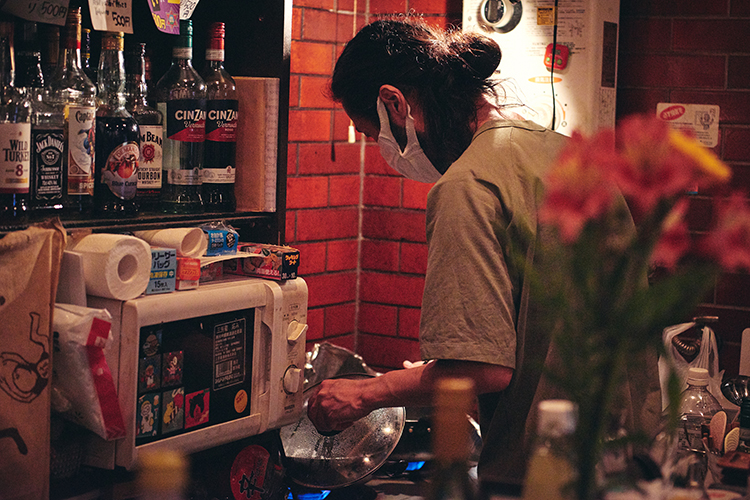
Tomofumi caters for limited-time events instead of running his own establishment.
Among the most interesting of Tomofumi’s undertakings are his self-published books containing his own recipes and culinary research.
He’s published nine volumes to date with such titles as Authentic North Indian Home-cooked Curry Recipes and A Fifth of Biryani. He’s currently writing his tenth.
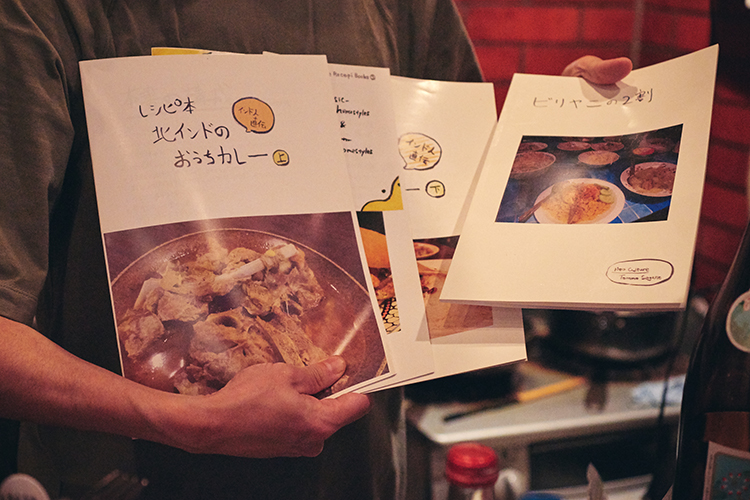
A few of Tomofumi’s cookbooks. The handwritten titles are eye-catching.
“There was lots of information in Japan about fancy North Indian restaurant food, but humble home cooking got nary a mention. So I decided to write my own book about it. That was the first volume of Authentic North Indian Home-cooked Curry Recipes, my first self-published book, which appeared in 2015.”
In 2020, when Covid made it impossible to travel abroad, Tomofumi wrote A Fifth of Biryani. This brought together what he had discovered on his travels to date and learned from interviews with foreign chefs living in Japan, along with information gleaned from academic papers and other sources. The book covers a lot of ground. Besides the biryani of the Indian subcontinent, it also describes related dishes eaten in the Middle East and Southeast Asia. After the book came out, Tomofumi was asked to provide the recipes for Thai khao mok and Saudi Arabian kabsa for the 2021 book Biryani edited by curry expert Mizuno Jinsuke.
One region of particular interest to Tomofumi is Ladakh, on the Indian side of the disputed border with Pakistan and China. Its cusuine blends Tibetan, Nepali, and Indian elements. It’s the perfect place to compare different food cultures and observe how they influence each other.
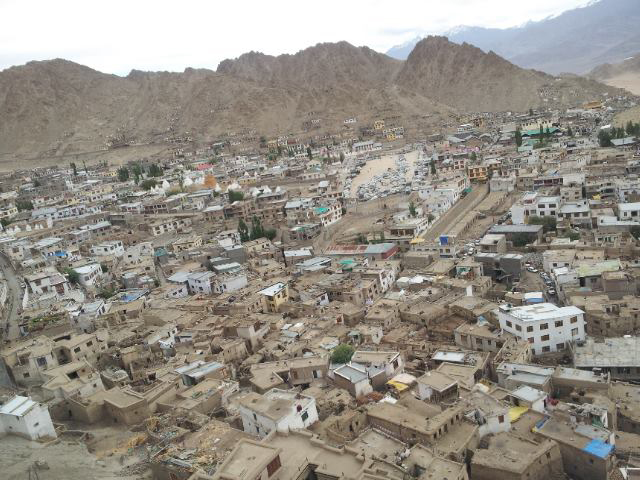
View of Leh, the main city of Ladakh
Tomofumi visited Ladakh in 2015. One ingredient that piqued his curiosity was something called “skotse,” which was added as a finishing touch to mokthuk, a type of momo soup. (Momo are dumplings consisting of vegetables or meat wrapped in flour dough, resembling Japanese gyoza.)
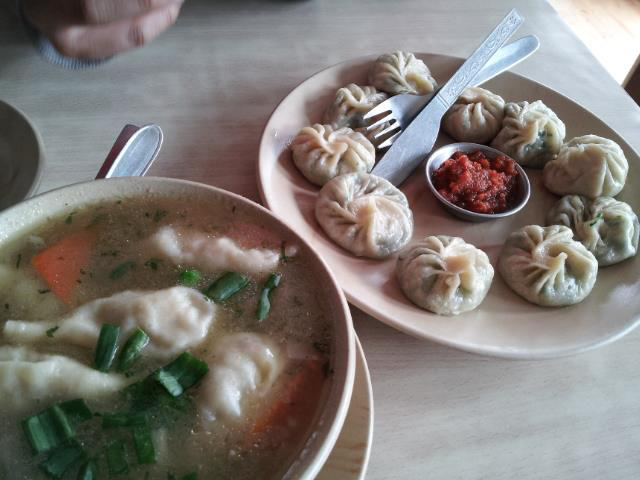
Mokthuk (left) and vegetable momo, two dishes that Tomofumi came across in Ladakh
Skotse is a herb produced by crushing a plant known as Himalayan chives in a stone mill and squeezing out all the moisture, then drying it. It’s tempered — that is, heated in oil to release the aroma — before being used. You can think of it as basically the same dry herb as the jimbu used in dal in Nepali cooking.
“The skotse used in Ladakhi mokthuk was fascinating. It was used in the manner of Chinese aromatic vegetables, but in a Nepali spice context. Even more striking, skotse emitted a smell like natto (fermented soybeans).”
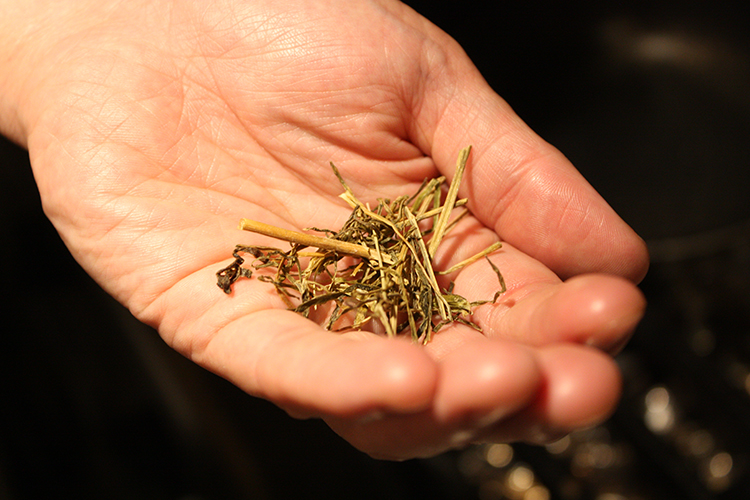
Ladakhi skotse and Nepali jimbu are basically the same herb.
Figuring that skotse might be fermented, Tomofumi consulted the relevant literature. To his disappointment, he found that it couldn’t properly be called a fermented food, since no microbes were involved in its production. Still, he continues to experiment with recreating the taste he encountered on his trip — by adding jimbu to soup momo, for example.
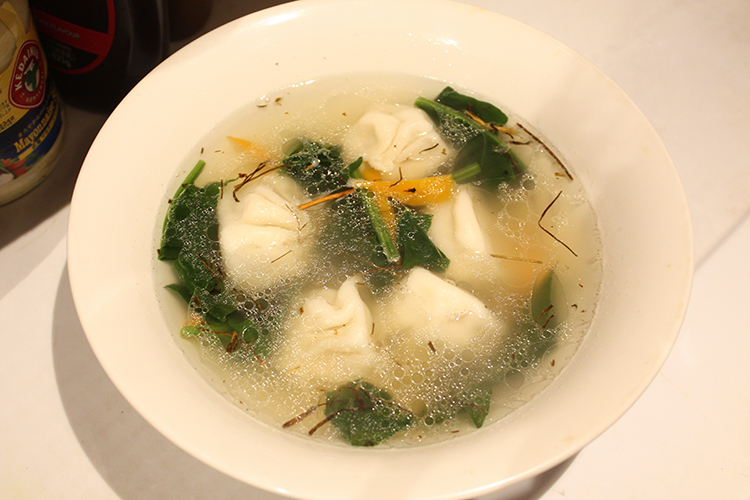
Tomofumi’s experimental mokthuk, with tempered jimbu added for a finished touch
Ladakhi cuisine is also famous for fermented milk products like cultured butter and cheese. The milk is pasteurized, then starter culture is added to ferment it. This process yields a substance thicker than yogurt, like sour cream. It’s then churned with an implement designed for that purpose until it separates into solids and liquid. The solids become cultured butter, and the liquid becomes buttermilk. The buttermilk is heated so it coagulates into a semisolid substance like cottage cheese. This is then dried, yielding a dried cheese called chhurpi.
“In Ladakh, you don’t often see pickled vegetables like Nepali gundruk or achar. On the other hand, fermented milk products seem to be common. Cheese momo made with chhurpi filling taste delicious.”
Another Ladakhi specialty is salted butter tea, made by adding cultured butter and salt to milk tea and then churning it.
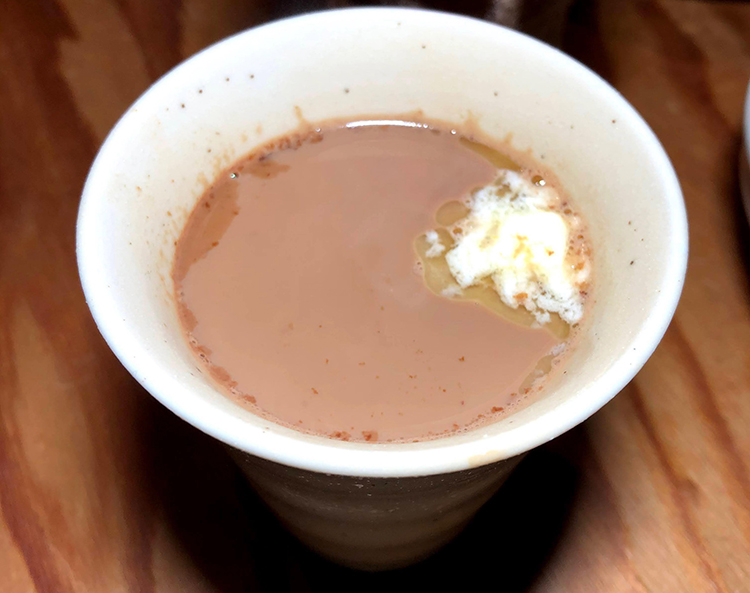
The salted butter tea Tomofumi served in Toyama
“The salted butter tea I had in Ladakh was very rich and tasted of the wild. I once held an event showcasing Ladakhi cuisine in Toyama Prefecture. I served salted butter tea with skyu (which is like suiton or flour dumplings in soup) and thukpa (which is like udon). For some reason, many people in Toyama are really curious about exotic foreign foods, and they happily drank my salted butter tea.”
Not being able to visit faraway places because of the global Covid pandemic has been serious setback, Tomofumi admits. But that hasn’t dampened his enthusiasm in the least. Until he’s free to travel back and forth again, he intends to keep writing self-published books and creating related content. No doubt he will continue to bring us new insights into the world’s cuisines.
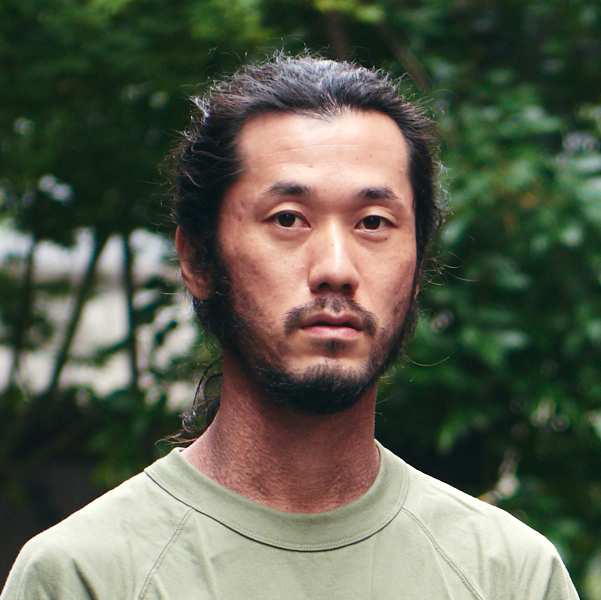
Sogabe Tomofumi has dedicated his life to traveling across Asia and the world exploring different countries’ foods, then bringing them to tables across Japan. He runs Neo Culture, which organizes meal gatherings and events showcasing Asian food, compiles recipes, and produces niche publications. He provided several recipes for the book Biryani edited by Mizuno Jinsuke, which appeared in April 2021. His books include A Fifth of Biryani and Authentic North Indian Home-cooked Curry Recipes.